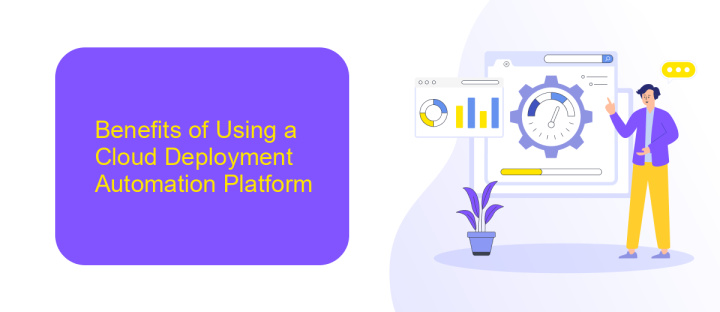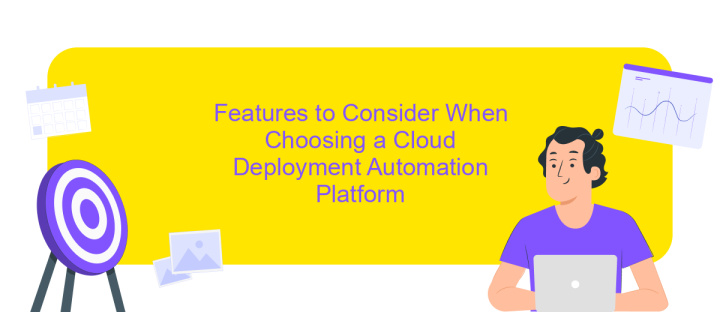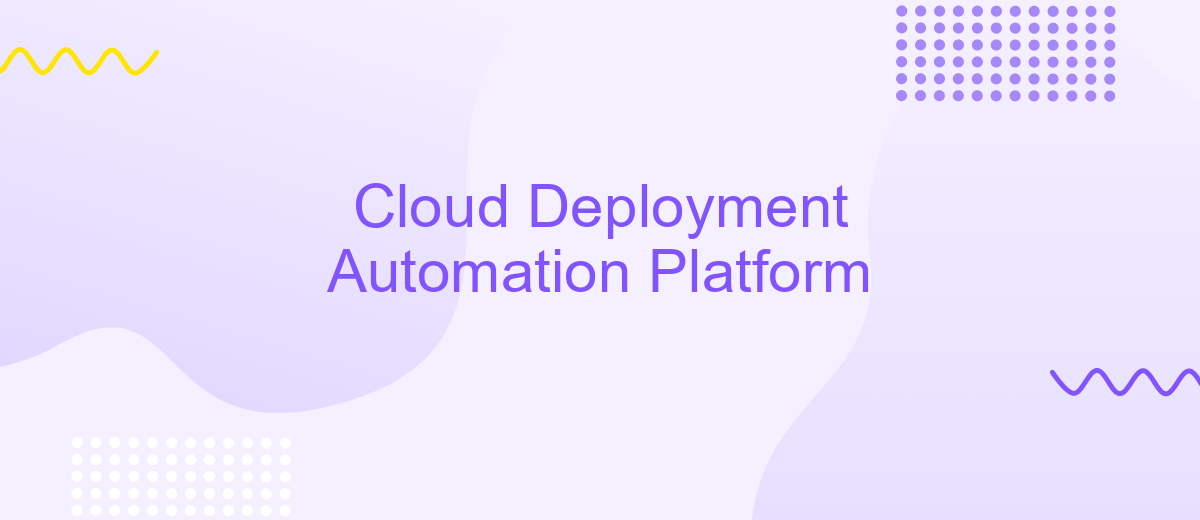Cloud Deployment Automation Platform
In today's rapidly evolving tech landscape, efficient cloud deployment is crucial for maintaining a competitive edge. A Cloud Deployment Automation Platform streamlines the process, enabling businesses to deploy, manage, and scale applications with ease and precision. By automating repetitive tasks, it reduces human error, accelerates deployment times, and allows IT teams to focus on strategic initiatives, ultimately driving innovation and growth.
Introduction
In the rapidly evolving digital landscape, businesses are increasingly turning to cloud technologies to enhance their operational efficiency and scalability. Cloud Deployment Automation Platforms (CDAPs) have emerged as essential tools, enabling organizations to streamline their deployment processes, reduce manual intervention, and minimize errors. These platforms offer a seamless way to manage complex cloud environments, making it easier for businesses to innovate and respond to market demands swiftly.
- Automated provisioning and configuration of cloud resources
- Integration with various cloud service providers
- Scalability to accommodate growing business needs
- Enhanced security and compliance management
- Cost optimization through efficient resource management
By leveraging a Cloud Deployment Automation Platform, organizations can focus on their core competencies while ensuring their cloud infrastructure is robust, reliable, and efficient. These platforms not only simplify the deployment process but also provide valuable insights into resource utilization and performance metrics. As a result, businesses can achieve faster time-to-market, improved agility, and a competitive edge in their respective industries.
Benefits of Using a Cloud Deployment Automation Platform

Implementing a Cloud Deployment Automation Platform can significantly enhance an organization's operational efficiency. By automating repetitive deployment tasks, teams can focus more on innovation rather than manual processes. This not only reduces the likelihood of human error but also accelerates the deployment cycle, enabling faster time-to-market for applications. Additionally, automation platforms provide scalability, allowing businesses to seamlessly manage increased workloads without compromising performance. This scalability is crucial for adapting to dynamic market demands and ensuring that resources are optimally utilized.
Moreover, integrating a platform like ApiX-Drive can streamline the process of connecting various applications and services, further enhancing automation capabilities. ApiX-Drive simplifies the setup of complex integrations, ensuring data flows smoothly between different systems. This integration capability is vital for maintaining a cohesive IT ecosystem, where different tools and platforms work in harmony. By leveraging such integration services, organizations can ensure that their cloud infrastructure is not only automated but also interconnected, providing a robust foundation for digital transformation and innovation.
Features to Consider When Choosing a Cloud Deployment Automation Platform

When selecting a cloud deployment automation platform, it's crucial to evaluate several key features to ensure it meets your organization's needs. A well-chosen platform can streamline operations, enhance scalability, and reduce deployment time.
- Scalability: Ensure the platform can handle your current and future workload demands without compromising performance.
- Integration: Check for compatibility with your existing tools and services to facilitate seamless operations.
- Security: Look for robust security features, including encryption and compliance with industry standards, to protect sensitive data.
- User Interface: A user-friendly interface can significantly reduce the learning curve and improve productivity.
- Cost Efficiency: Analyze the pricing model to ensure it aligns with your budget while providing necessary features.
By carefully considering these features, you can select a cloud deployment automation platform that not only meets your current requirements but also supports future growth. This strategic choice will ultimately lead to more efficient processes and a competitive edge in the market.
Best Practices for Implementing a Cloud Deployment Automation Platform

Implementing a cloud deployment automation platform requires a strategic approach to ensure efficiency and scalability. Begin by assessing your current infrastructure and identifying specific areas where automation can drive the most value. This evaluation will help in selecting the right tools and technologies that align with your organizational goals.
Next, focus on designing a robust architecture that supports seamless integration with existing systems. Establish clear objectives and metrics to measure the success of your automation efforts. It's crucial to involve key stakeholders from different departments to gather diverse insights and foster collaboration.
- Ensure security protocols are integrated from the outset to protect sensitive data.
- Prioritize continuous integration and continuous deployment (CI/CD) practices to streamline processes.
- Leverage Infrastructure as Code (IaC) to maintain consistency and reduce manual errors.
- Regularly update and maintain the automation platform to adapt to evolving business needs.
Finally, invest in training and support to empower your team to effectively use the platform. Encourage a culture of continuous improvement by regularly reviewing performance and incorporating feedback. By following these best practices, organizations can maximize the benefits of cloud deployment automation and achieve long-term success.
- Automate the work of an online store or landing
- Empower through integration
- Don't spend money on programmers and integrators
- Save time by automating routine tasks
Conclusion
In conclusion, the implementation of a Cloud Deployment Automation Platform significantly streamlines the deployment process, enhancing efficiency and reducing the likelihood of human error. By automating repetitive tasks, organizations can focus more on innovation and less on manual configurations. This leads to faster delivery times and improved scalability, allowing businesses to adapt swiftly to changing demands. Furthermore, such platforms provide a unified interface for managing cloud resources, ensuring consistency and reliability across various environments.
Integrating these platforms with tools like ApiX-Drive can further enhance their capabilities by simplifying the integration process with other services. ApiX-Drive offers seamless connectivity between diverse applications, enabling smooth data flow and communication. This integration capability not only accelerates deployment but also ensures that all components of the IT ecosystem work harmoniously. As a result, businesses can achieve a more cohesive and efficient operational structure, ultimately leading to enhanced productivity and competitive advantage in the market.
FAQ
What is a Cloud Deployment Automation Platform?
How does automation improve cloud deployment?
Can I integrate third-party services with a Cloud Deployment Automation Platform?
What are the security considerations for using a Cloud Deployment Automation Platform?
How can I monitor the performance of my deployed applications?
Apix-Drive is a simple and efficient system connector that will help you automate routine tasks and optimize business processes. You can save time and money, direct these resources to more important purposes. Test ApiX-Drive and make sure that this tool will relieve your employees and after 5 minutes of settings your business will start working faster.


